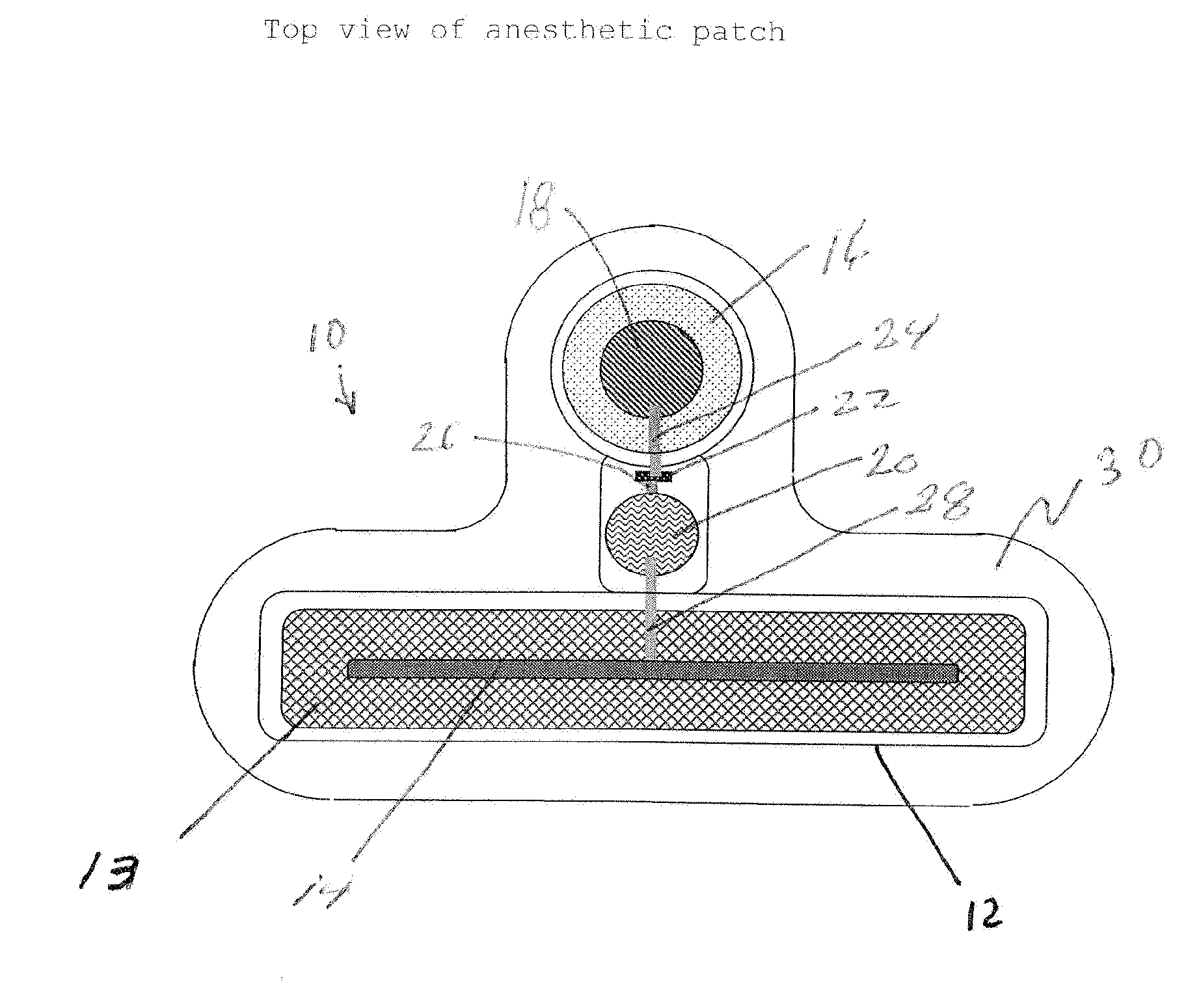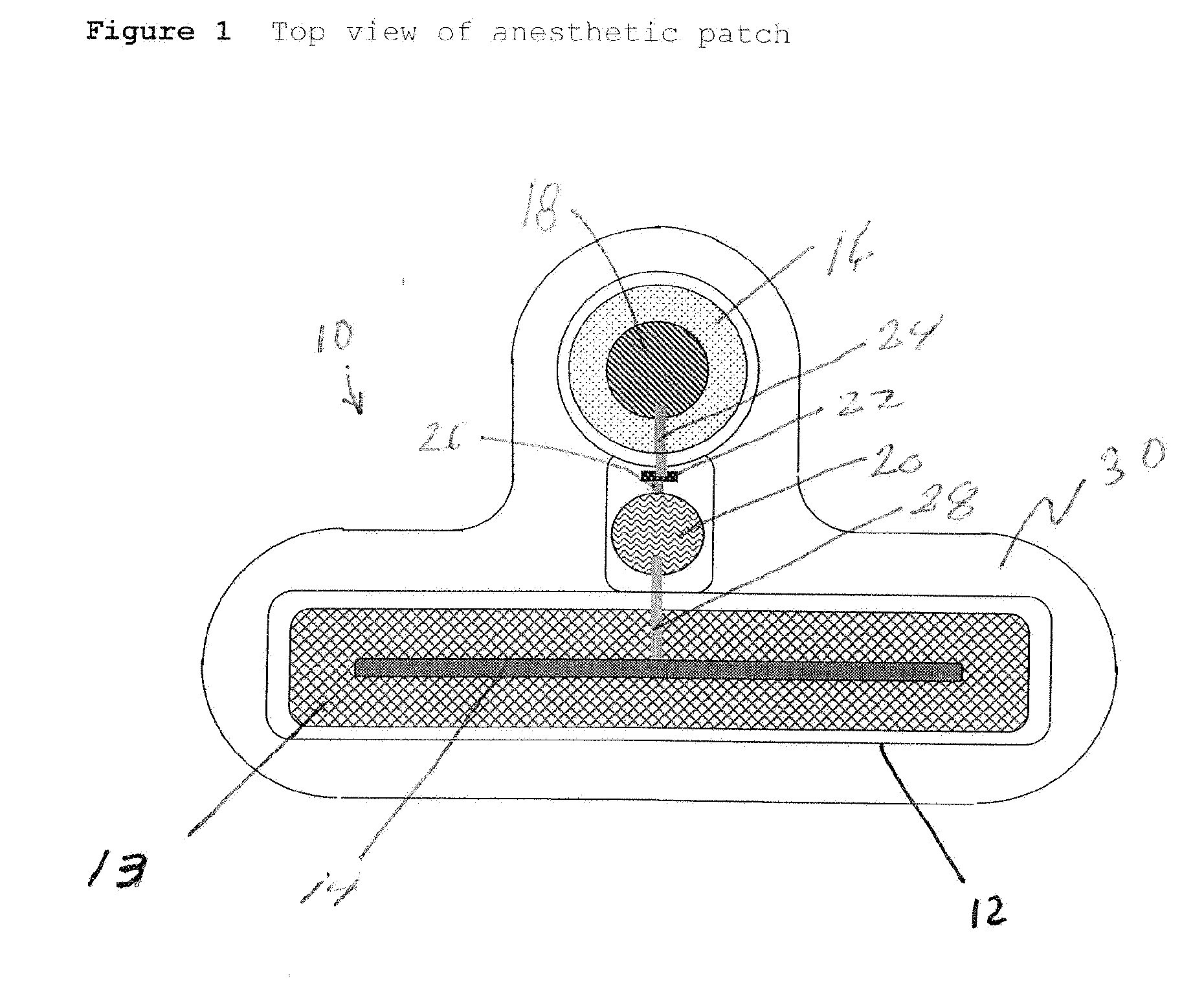Transdermal Systems for the Delivery of Ionic Agents Directly to Open Wounds and Surgically Repaired Incisions
- Summary
- Abstract
- Description
- Claims
- Application Information
AI Technical Summary
Benefits of technology
Problems solved by technology
Method used
Image
Examples
example 1
In-Vitro Delivery of Lidocaine into an Incision Using Human Cadaver Skin
[0043]An incision was made in cadaver skin, which was then sutured closed. A delivery chamber consisting of an absorbent pad saturated with 4% lidocaine was placed over the incision. A zinc donor electrode was connected to the 4 cm2 delivery pad, and a silver chloride counter electrode was placed in a location remote to the delivery chamber, in ionic contact with the cadaver skin by an agarose gel filled with 0.9% saline. To determine whether lidocaine is transferred by iontophoresis, several microdialysis probes were placed in varying locations: under the incision, under the dermis adjacent to the incision, and into an agarose gel at 1 and 4 cm depths underlying the cadaver skin. Current was increased from 0.12 mA for the first two hours to 0.33 mA in hours 2-4 and to 0.54 mA in hours 4-6. As a passive control, the same apparatus was used absent current flow. Concentration of lidocaine sufficient to cause anest...
example 2
n-Vivo Delivery of Lidocaine into Surgically Repaired Incisions
[0045]An incision was made in hairless rats, which was then sutured closed. A delivery chamber, consisting of an absorbent pad saturated with 4% lidocaine, was placed over the incision. A silver donor electrode was connected to the 2 cm2 delivery pad and a silver chloride counter electrode chamber filled with 0.9% saline was placed on the animal in a location remote to the delivery chamber. To determine whether lidocaine is transferred by iontophoresis, a microdialysis probe was placed in the incision. A total of 0.3 mA of iontophoretic current was applied for 24 hours, with lidocaine concentration monitored within the incision. As a passive control, the same apparatus was used absent current flow. Concentration of lidocaine sufficient to cause anesthesia was generated in the incision for the entire 24-hour period for the active iontophoretic probe. The results of this study are shown in plot form in FIG. 5.
[0046]While t...
PUM
 Login to View More
Login to View More Abstract
Description
Claims
Application Information
 Login to View More
Login to View More - R&D
- Intellectual Property
- Life Sciences
- Materials
- Tech Scout
- Unparalleled Data Quality
- Higher Quality Content
- 60% Fewer Hallucinations
Browse by: Latest US Patents, China's latest patents, Technical Efficacy Thesaurus, Application Domain, Technology Topic, Popular Technical Reports.
© 2025 PatSnap. All rights reserved.Legal|Privacy policy|Modern Slavery Act Transparency Statement|Sitemap|About US| Contact US: help@patsnap.com



